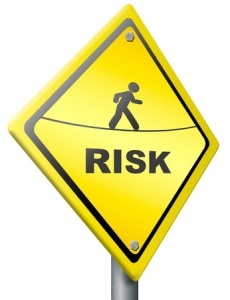By Rose O. Sherman, EdD, RN, FAAN
“When a leader makes the choice to put the safety and lives of the people inside the organization first, to sacrifice their comforts and sacrifice the tangible results, so that the people remain and feel safe and feel like they belong, remarkable things happen.” Simon Senek
 Several weeks ago, I ask my emerging nurse leader graduate students to talk about psychological safety in the workplace after watching Simon Sinek’s excellent TED talk on how good leaders make us feel safe. Surprisingly few of the students felt a level of safety in their workplaces where they could share their opinions freely and not feel that there would be repercussions from their leaders. They told me about town meetings where senior leaders ask for input and no one really feels free to talk about issues and problems. We know from patient safety research that an absence of psychological safety is a contributing factor to medical errors because of a failure to communicate even when there are problems. Some of the students told me that they had watched nurses take risks and suffer consequences as an outcome of speaking up. It is a leader’s role to create this psychological safety in the workplace.
Several weeks ago, I ask my emerging nurse leader graduate students to talk about psychological safety in the workplace after watching Simon Sinek’s excellent TED talk on how good leaders make us feel safe. Surprisingly few of the students felt a level of safety in their workplaces where they could share their opinions freely and not feel that there would be repercussions from their leaders. They told me about town meetings where senior leaders ask for input and no one really feels free to talk about issues and problems. We know from patient safety research that an absence of psychological safety is a contributing factor to medical errors because of a failure to communicate even when there are problems. Some of the students told me that they had watched nurses take risks and suffer consequences as an outcome of speaking up. It is a leader’s role to create this psychological safety in the workplace.
What is Psychological Safety?
Dr. Amy Edmondson, a Harvard business professor, is an expert on psychological safety in the workplace. She provides the following description: “Psychological safety describes the individuals’ perceptions about the consequences of interpersonal risk in their work environment. It consists of taken-for-granted beliefs about how others will respond when one puts oneself on the line, such as by asking a question, seeking feedback, reporting a mistake, or proposing a new idea. One weighs each potential action against a particular interpersonal climate, as in, “If I do this here, will I be hurt, embarrassed or criticized?” An action that might be unthinkable in one work group can be readily taken in another, due to different beliefs about probable interpersonal consequences.” Steps to increase Psychological Safety Nurse leaders play an important role in creating cultures that are psychologically safe for staff to question practices, report problems or propose new ideas. The following statements from Is Yours a Learning Organization Inventory are considered important indicators to ask your team:
- On this team, it is easy to speak up about what is on your mind.
- If you make a mistake on this team, it is often held against you.
- People on your work team are usually comfortable talking about problems and disagreements.
- People on this team are eager to share information about what does and does not work.
- Keeping your cards close to your vest is the best way to get ahead on this team.
On a team where staff feel psychological safety, staff have confidence that they will receive respect and consideration from others. A group with a culture of psychological safety encourages open discussion of tough issues. It not only tolerates disagreement, it nurtures contrasting points of view. Leaders can help create these environments by developing and reinforcing the following team behaviors:
- Civility – Showing civility is the most available contribution people can make to creating and sustaining psychological safety. Attending to what others contribute and responding with consideration not only reduces anxiety but encourages creative thinking.
- Argue with Respect – Contrasting ideas are the greatest source of creativity. It is important for team members to learn to be tolerant of other viewpoints. Agreement should not be a mandatory value but agreeing to respectfully disagree should be.
- Be supportive – Using supportive language towards others should be an expectation. Humor does not excuse a put-down nor does it make one palatable. People really don’t like it.
Feeling safe at work can increase the person’s energy, enthusiasm and zest for life. Nurse leaders who hold both themselves and the team clearly accountable to behavioral standards that improve psychological safety can a significant impact on the creation of a more positive and safe work environment.
Read to Lead Edmondson, A. C. (2002). Managing the risk of learning: Psychological safety in work teams
Sinek, S. (March 2014) Why Good Leaders Make You Feel Safe – A Leadership TED TAlK ©
emergingrnleader.com 2014


 LinkedIn
LinkedIn Instagram
Instagram